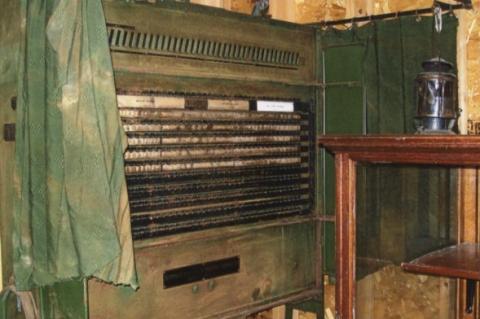This voting machine was patented by inventor Alfred J. Gillespie and manufactured by the Standard Voting Machine Company of Rochester, New York, in the late 1890s. It was the first to use a voter-activated mechanism that drew a privacy curtain around the voter and simultaneously unlocked the machine's levers for voting. In 1898, Gillespie and inventor Jacob Myers, whose patents informed Gillespie's work, organized a company that became Automatic Voting Machine Company. Myers gave the first demonstration of a voting machine in an 1892 Lockport, New York, town election. From 1898 through the early 1960s, the gear-and-lever voting machine was promoted as an ideal voting technology. Though its internal mechanism changed over the years, the machine's "three steps to vote" never changed: pull the handle to close the curtains of the booth, turn the voting levers over the names of your chosen candidates to expose the Xs, pull the handle back to register your vote and reopen the curtains. For any use other than instructional resources, please check with the organization that owns this item regarding copyright restrictions.
2018.063.006 [Machine, Voting]
Legal Status
Ownership of this resource is held by the West Bend Historical Society and has been provided here for educational purposes only, specifically for use in the Iowa Museum Association's "Teaching Iowa History" project. It may not be downloaded, reproduced or distributed in any format without written permission from the Rights Holder. For information on U.S. and International copyright laws, consult an attorney.

